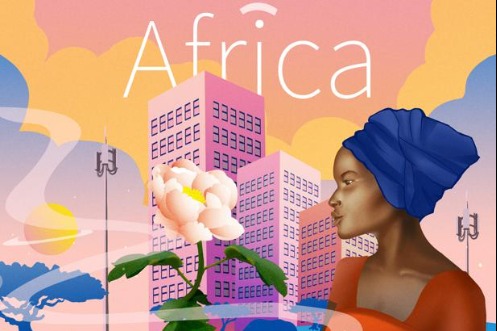China is what the CPC has made her


Amid much festivity and fanfare, the 100th founding anniversary of the Communist Party of China (CPC) is being celebrated across the world today. The party set its historic journey, with only 50 members, from a boat in Zhejiang, an eastern coastal province of China, on July 23, 1921.
The CPC has now become over time the largest political party in the world, with over 90 million members. Just like many other parties, the CPC has gone through some ups and downs throughout its journey. But it had to live through many unusual challenges, including isolation, a huge population, and several unjust wars with the successive superpowers.
Just after nearly three decades of its foundation, the CPC established the People’s Republic of China (PRC) on October 1, 1949. Even after the establishment of the socialist country, the path for the CPC was rugged and it had to creep on all fours along thorny and inauspicious alleys of history.
However, the Party has never forgotten its core goal of serving the people of China against all the odds. Therefore, the CPC could build every inch of China as per its dreams and up to the expectations of the Chinese. If we look back at history, we can realize how fast and effectively the CPC has improved the fate of China and its people.
In the 1930s, China's GDP fell to $21.3 billion. The foreign investment totaled 3.5 billion, while capital investment dropped to only 3 billion. China witnessed a massive decline in agricultural prices. The income of rural farmers fell to 57 percent in some areas.
In 1937, Japan invaded China and most of the prosperous east coast was occupied by the Japanese, who committed atrocities such as the Nanjing Massacre. In one anti-guerrilla sweep in 1942, the Japanese killed up to 200,000 civilians in a month.
The war was estimated to have killed between 20 and 25 million Chinese and destroyed all that China built up in the preceding decade. After the war, China’s textile industry had 482,192 needle machines. Its key exports were limited to glue, tea, silk, sugar cane, tobacco, cotton, corn and peanuts.
By 1947, some 33.2 trillion of currency was issued as a result of massive budget deficits resulting from the war. Taxation revenue was just 0.25 billion, compared with 2.5 trillion in war expenses. Before the PRC was established in 1949, the total currency in circulation was 120 billion times more than in 1936. The country had the 40th GDP in the world and struggled to provide its largest population on the planet with enough food, clothes and other basic needs.
The CPC also inherited 80 percent illiteracy rates among youth and adults aged from 12 to 40 and lacked educational facilities with minimal national curricular goals. However, the leaders and activists of the Party had adequate courage, morale and dreams to build the nation as the most prosperous country in the world.
Capitalizing on mere courage and morale, the CPC has been leading China closer to its core dream for the last century. With its $15.66 trillion GDP in 2020, China now has the world's second-largest economy since 2010 in nominal GDP, and the world's largest economy since 2014 in purchasing power parity (PPP), with prospects for becoming the largest in nominal GDP by 2028.
The world's fastest-growing major economy, with growth rates averaging 10 percent over 30 years, has six of the world's top 10 most competitive financial centers, including Shanghai, Hong Kong, Beijing and Shenzhen, more than any other country. China has three of the world's 10 largest stock exchanges -- Shanghai, Hong Kong, and Shenzhen -- both by market capitalization and by trade volume.
The country has natural resources with an estimated worth of $23 trillion, 90 percent of which are coal and rare earth metals. China also has the world's largest total banking sector assets of around $45.838 trillion (309.41 trillion CNY) with $42.063 trillion in total deposits and other liabilities.
As of the end of June 2020, FDI stock in China reached $2.947 trillion, and China's outgoing FDI stock stood at $2.128 trillion. Total foreign financial assets owned by China reached $7.860 trillion and its foreign financial liabilities $5.716 trillion. China is the largest recipient of foreign direct investment in the world as of 2020, receiving inflows of $163 billion.
As of 2020, China has the largest number of billionaires and millionaires in the world. According to the 2019 Global Wealth Report by Credit Suisse Group, China surpassed the US in the wealth of the top ten10 percent of the world's population. As of 2020, China is home to the largest companies in the Fortune Global 500, and 129 are headquartered in China.
China is also home to more than 200 privately held technology startups (tech unicorns), each with a valuation of over $1 billion, the highest number in the world. China has the world's largest foreign exchange reserves worth $3.1 trillion, but if the foreign assets of China's state-owned commercial banks are included, the value of China's reserves rises to nearly $4 trillion.
China is the world's largest manufacturing economy and exporter of goods. It is also the world's fastest-growing consumer market and second-largest importer of goods. It is the largest trading nation in the world and plays a prominent role in international trade.
China ranks at the top globally in patents, utility models, trademarks, industrial designs and creative goods exports and also has the second and fourth spots of the global top five science and technology clusters, which is more than any other country. By the end of April 2021, China's 5G users had already surpassed 300 million.
The moon exploration program of China is the epitome of its diversified and startling development. With one success after another in lunar exploration, drawing global attention, China has successfully carried out the three-phase lunar probe mission with Change 5 returning to earth with lunar samples on Dec 17, 2020.
The mission makes China the third country to return samples from the moon after the US and the former Soviet Union. The mission has brought China closer to the realization of its final goal of moon exploration. With the historic successes achieved by Chang'e 5, China is really over the moon and thinks the achievement is a great leap for its lunar and space dreams. The country is upbeat to complete its next phase in the lunar exploration program by putting a man on the moon by 2030.
With a total of 11 missions, China is expected to complete the building of its space station, the first of its kind by a single country, by next year. The country has already stepped into the land of Mars. China’s robot has also successfully landed on Mars. Its robot is conducting thorough research on the red planet.
The CPC has steered China to such massive growth and development by introducing its major economic reforms, known as the reform and opening-up policy, in 1978. The country has since lifted more than 700 million people out of poverty, which is over 70 percent of the total global poverty reduction during the time. Thus it shook off abject poverty one decade before the deadline set by the UN by 2030. Thanks to the policy, China has now become an upper-middle-income country.
Under the Belt and Road Initiative (BRI), President Xi Jinping has propagated the new concept of win-win cooperation against the zero-sum policy in international relations. The BRI has since been contributing to regional and global development. The initiative has changed the long-standing norms of international affairs prevailing to benefit major countries.
The BRI has flipped the script on dealing with globalization and multilateralism by introducing the principle of win-win cooperation. It has prospects that could change the destiny of all humanity, irrespective of countries or regions. The BRI will never serve any narrow intentions of its proponent, China; rather it is an effective tool to build a community of common destiny for mankind.
During the dark days of the COVID-19 pandemic, China has emerged as an unparalleled friend of humanity. It was the first to pledge to make its vaccines a global public good and it has been honoring this commitment. China is working hard to contribute to realizing the accessibility and affordability of vaccines in developing countries. The country has so far provided vaccine assistance to over 80 developing countries and exported doses to more than 50 countries.
China has already supplied medical equipment to more than 150 countries and 13 international organizations to fight the virus. It is also working with developing countries through technology transfer and joint production. The country will provide an additional $3 billion in international aid over the next three years to support the COVID-19 response and economic and social recovery in other developing countries.
China has already supplied 300 million doses of vaccines to the world, and it will provide still more vaccines to the best of its ability. China supports its vaccine companies in transferring technologies to other developing countries and carrying out joint production with them.
Like many other countries in the world, Bangladesh is also a beneficiary of Chinese assistance and cooperation in the fight against the novel coronavirus. As a friendly nation, Bangladesh has already received 1.1 million doses of Chinese vaccines as gifts. China is expected to continue donating more vaccines to Bangladesh in the future.
China has managed to defeat the deadly virus at home and come out as the only savior of the already-devastated world from the curse of COVID-19. The country has already administered more than 1 trillion doses of vaccines at home. China has extended its helping hands to rescue other countries in a time when other major countries have turned their back on mankind.
Now, it is easily understandable that when the CPC founded the PRC, the condition was not as it seems now in China. Stampeding the oceans of setbacks and challenges, the CPC has driven China to its current level. The Party has now set off on the journey to turn China into a modern socialist country by 2049, the centenary of the foundation of the PRC. Hence the world credits the Party with the vast advancement of China. It is now like a universal truth that China is what the CPC has made her.
The article was first published at the Bangladesh Post.
MdEnamul Hassan is a news editor and broadcast journalist at China Media Group (CMG) in Beijing China.
The opinions expressed here are those of the writer and do not necessarily represent the views of China Daily and China Daily website.
If you have a specific expertise and would like to contribute to China Daily, please contact us at opinion@chinadaily.com.cn, and comment@chinadaily.com.cn.


































